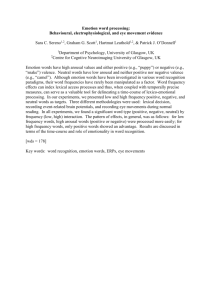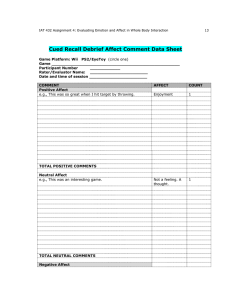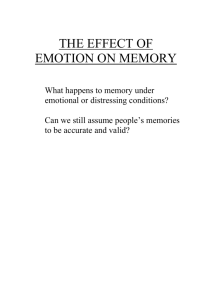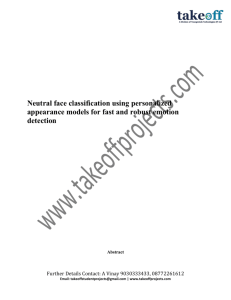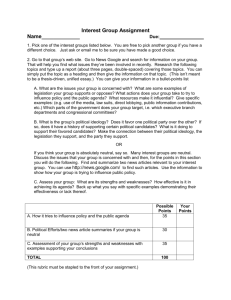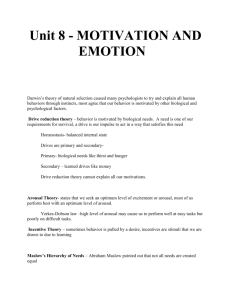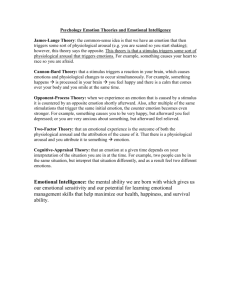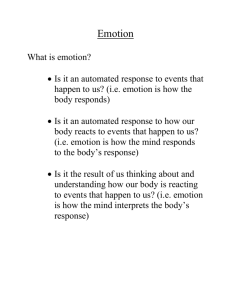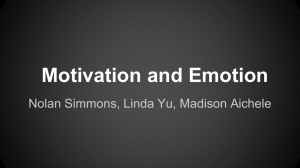Emotion word processing: Evidence from lexical decision
advertisement
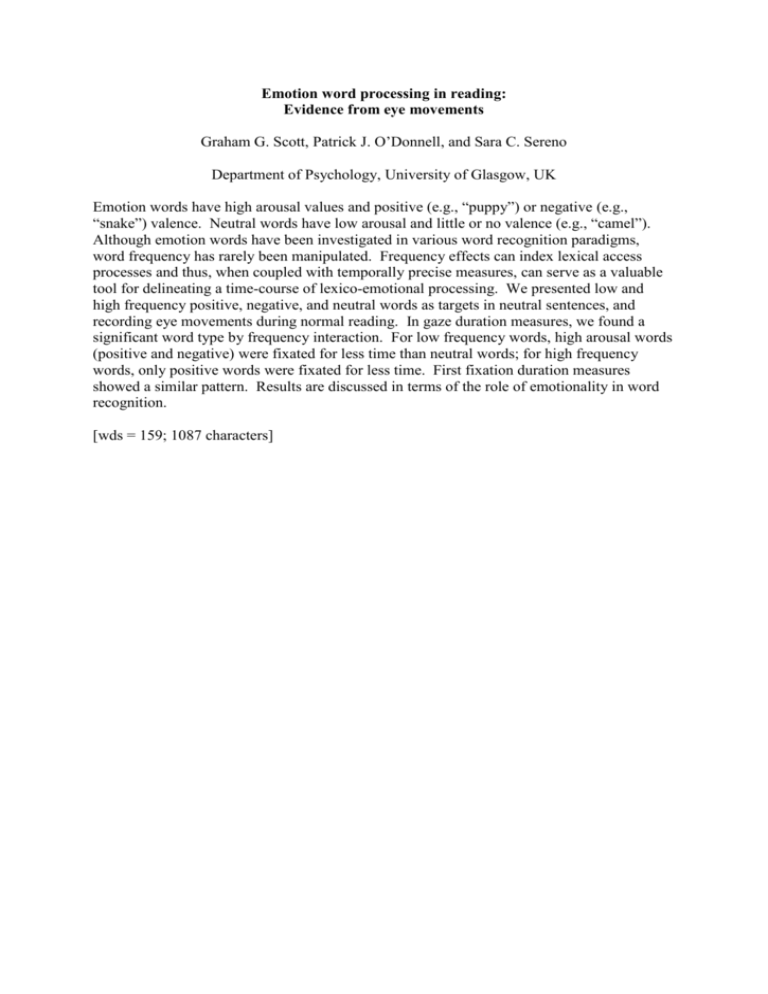
Emotion word processing in reading: Evidence from eye movements Graham G. Scott, Patrick J. O’Donnell, and Sara C. Sereno Department of Psychology, University of Glasgow, UK Emotion words have high arousal values and positive (e.g., “puppy”) or negative (e.g., “snake”) valence. Neutral words have low arousal and little or no valence (e.g., “camel”). Although emotion words have been investigated in various word recognition paradigms, word frequency has rarely been manipulated. Frequency effects can index lexical access processes and thus, when coupled with temporally precise measures, can serve as a valuable tool for delineating a time-course of lexico-emotional processing. We presented low and high frequency positive, negative, and neutral words as targets in neutral sentences, and recording eye movements during normal reading. In gaze duration measures, we found a significant word type by frequency interaction. For low frequency words, high arousal words (positive and negative) were fixated for less time than neutral words; for high frequency words, only positive words were fixated for less time. First fixation duration measures showed a similar pattern. Results are discussed in terms of the role of emotionality in word recognition. [wds = 159; 1087 characters]
